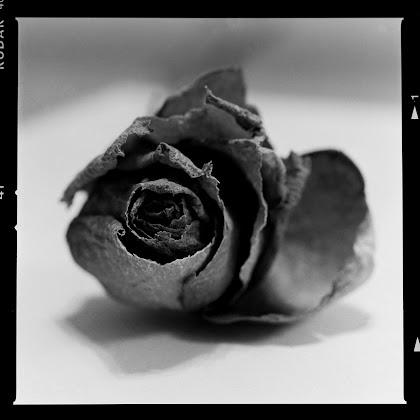Do you remember the first photographic film that you ever put into your camera? I'm guessing that many of you may have also used this film when first learning photography. For me, even though the years have have come and gone that memory stands out like it was just yesterday, Kodak Tri-X 400.
Because of the film's great exposure latitude range, Tri-X is often suggested by photographers (both educators and professionals) as the go to film for those just beginning their analog journey. Kodak's panchromatic offering is also one of it's fastest films with an ISO of 400. You can easily push this film to 800 or 1600 ISO to give it a gritty grainy look that is most pleasing to the eye. Perhaps the overall texture and feel of the film has made it one of Kodak's most famous film over years.
Although the film was re-engineered in 2007, you still have the "classic Tri-X look" which was accomplished even while reducing the amount of silver in the film. On close examination of the photograph of the rose above, you can see that classic look along with the finer grain emanating throughout the photograph.
Tri-X also gives a beautiful range of tones and punchy contrast. With that said, personally I've found it a bit difficult to control this film. The negatives I'm producing are a little flat to my eye.
Historically speaking, sometime around 1940, Kodak introduced Tri-X as a sheet film onto the market. Its initial speed was that of 200 ASA (ISO in today's term). How film speeds were determined at that time is most likely for the lower rating of the film. An adjustment to 400 ASA was made somewhere around 1960 more accurately representing its speed.
The popularity of Leica's newly introduced M System rangefinder camera helped raise this film fame in the mid 1950's when it was released in 35MM and 120MM. In an interesting side note, Leica's current film camera, the M-A includes a box of Tri-X in the box with the camera. What a wonderful touch by
Leica.
Many famous photographers made the switch to Tri-X including Henri Cartier-Bresson during that time. Modern day photographer Michael Kenna uses Tri-X as his go to film along with his Hasselblad cameras. Many of Kenna's most iconic photographs have been done using this combination. I think his book "Forms of Japan" has some of the most beautiful photographs that I've ever seen. Posthumously famous photographer Vivian Maier is said to have also used Tri-X for a lot of her own work also.




No comments:
Post a Comment